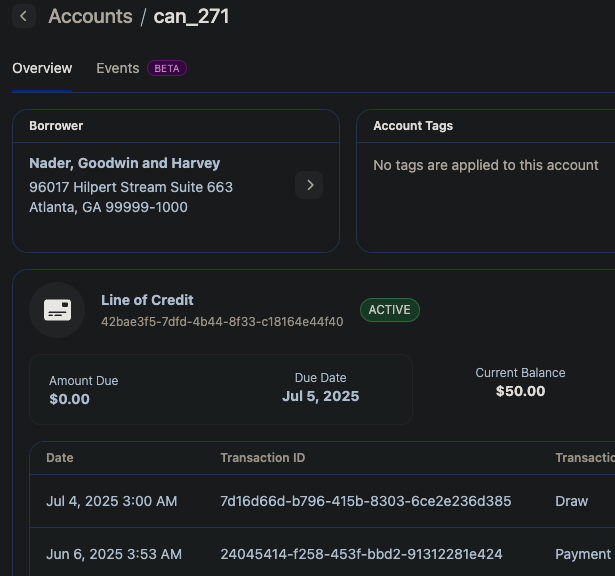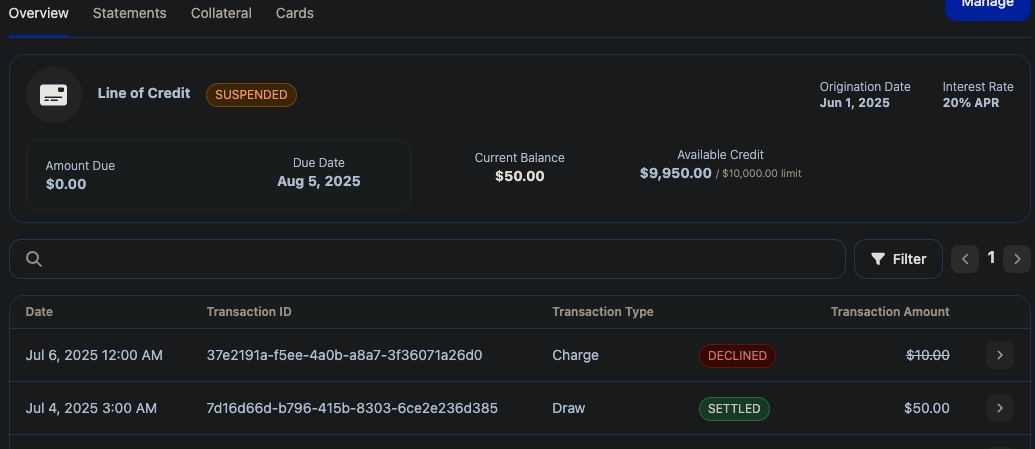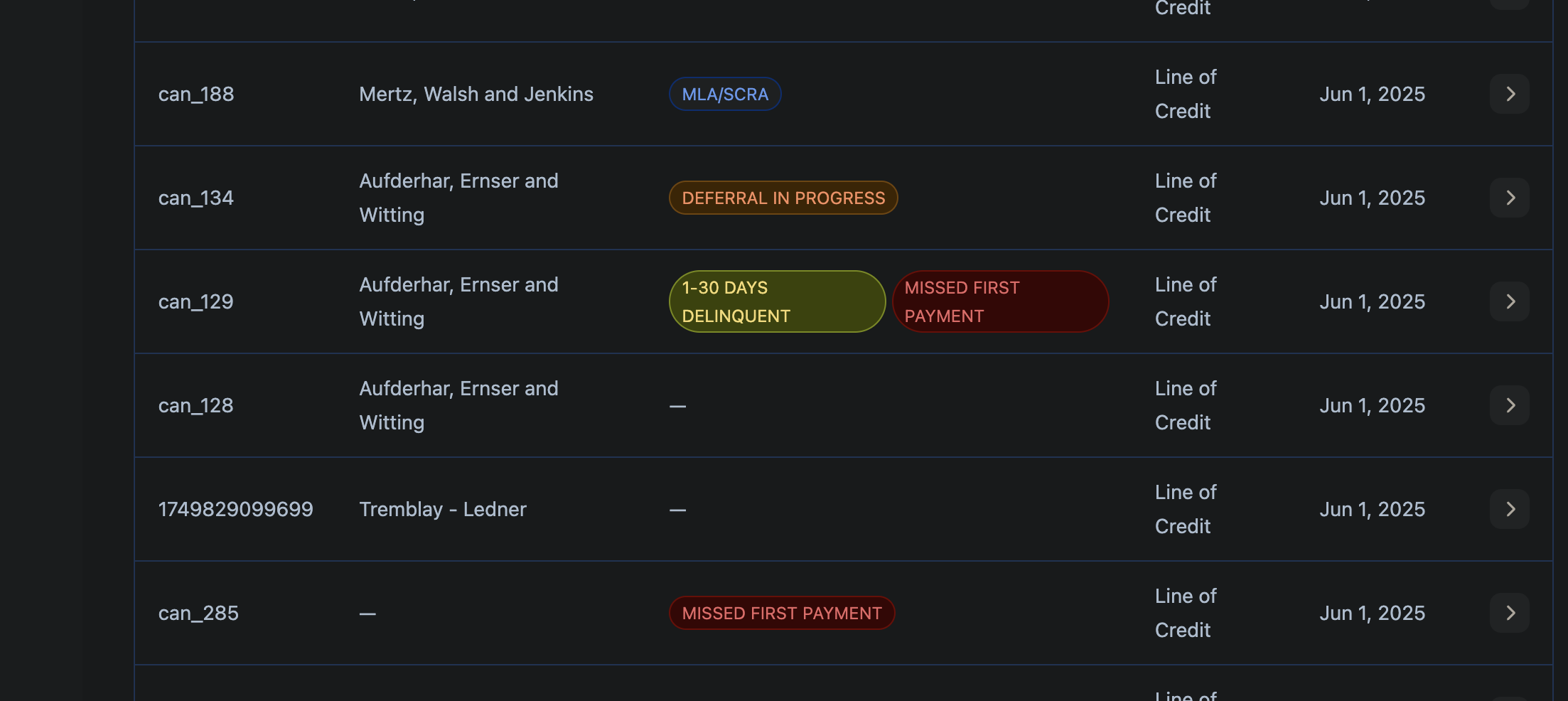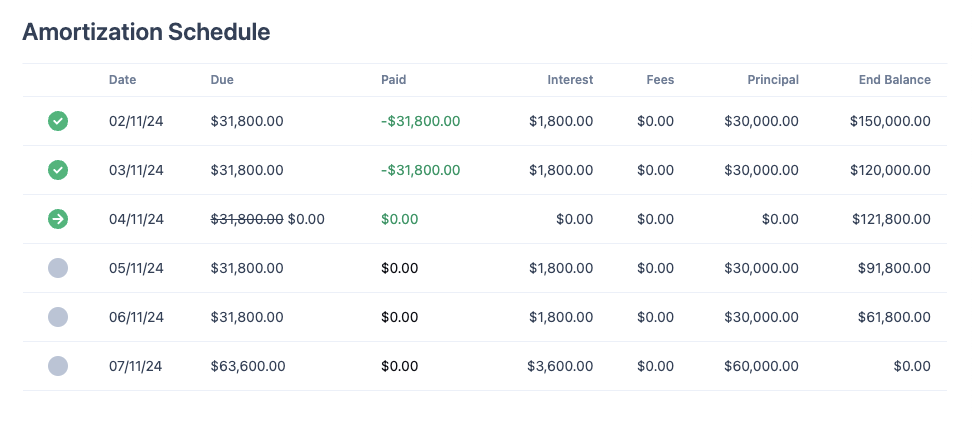A new endpoint that provides complete historical tracking of status changes across the lifecycle of lines of credit. This feature enables lenders to view a chronological audit trail showing when each status transition occurred.
The endpoint returns timestamped records of all status changes, supporting compliance requirements, operational reviews, and portfolio analysis by providing full visibility into how and when credit facilities moved through their lifecycle states. This historical data is essential for understanding borrower patterns, validating operational decisions, and maintaining comprehensive records for regulatory reporting and internal auditing purposes.





